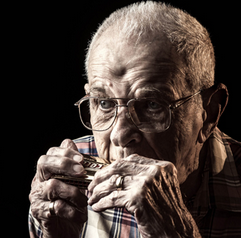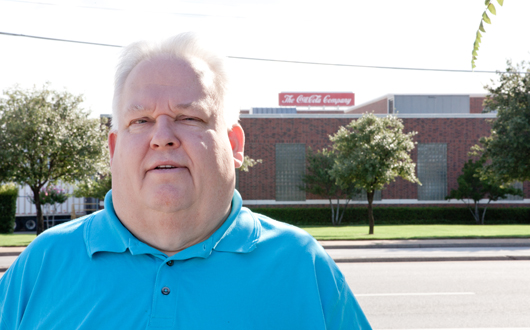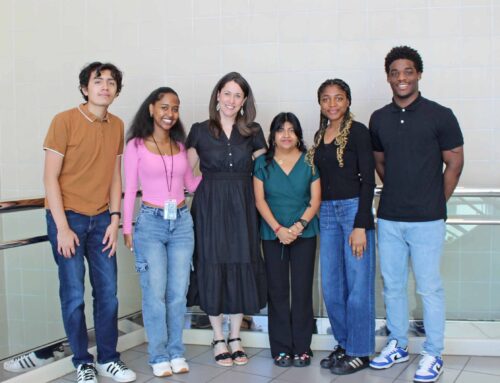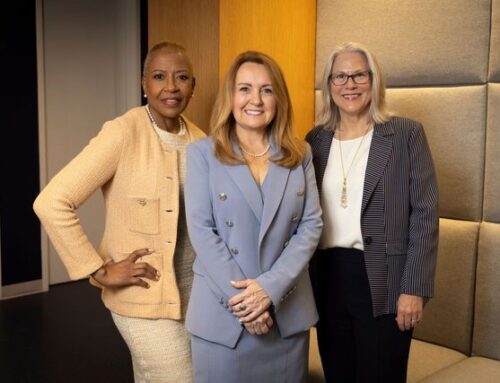As we embark on the 50th anniversary of the John F. Kennedy assassination, here is a roundup of past articles on neighbors who were intensely affected by the events — one is a piece published in the November Lake Highlands Advocate about neighborhood resident G.M. Tippit, a 94-year-old retired police officer whose name appeared in the Warren Commission report after he was mistaken for J.D. Tippit, the officer killed during the hunt for Kennedy’s assassin. The second is about Ernest Brandt who witnessed Kennedy’s death. Brandt, now in his late 80s, still gives tours and tells his story. The third is about Scott Causey, a Lake Highlands man who, as a teen, was at Parkland when paramedics brought in the president.
Find details on Dallas‘ JFK 50 events here.
Dallas Police Officer G.M. “Tip” Tippit, a Lake Highlands resident, was off duty on Nov. 22, 1963. As tragic events — the assassinations of President John F. Kennedy and police officer J.D. Tippit by Lee Harvey Oswald — unfolded, many, even Oswald’s eventual killer Jack Ruby, erroneously assumed G.M. was the slain Officer Tippit. With the rest of the world, Tip was devastated by the killings. “He was an ol’ country boy, like myself,” Tip says of J.D. But in days and years to come, J.D. Tippit’s slaying would uniquely impact Tip’s life.
Early aftermath
“I was working in the garage when I heard that Kennedy had been shot,” Tip recalls. “I just turned my garage radio on and listened.”
As news of the president’s and later J.D. Tippit’s death was broadcast around the nation, reporters looking for an angle began calling Tip’s home; they mistook him for his fallen associate with the same last name.
“The phone rang for three days solid after Tippit was killed,” Tip recalls. Tip also knew Jack Ruby, the nightclub owner who shot and killed Lee Harvey Oswald — at the time Oswald was in police custody and was suspected of killing both the president and Officer Tippit.
Ruby, too, based on official documents, mistook Tip for J.D.
In the Warren Commission Report, the investigation into Kennedy’s assassination, Tip is mentioned on page 262:
“Early Friday afternoon, Nov. 22, [Jack] Ruby remarked how he knew Tippit, the officer who had been shot by Oswald. Later Ruby stated that he did not know J.D. Tippit but that his reference was to G.M. Tippit, a member of the special services bureau of the Dallas Police Department who had visited Ruby establishments during the course of his official duties.”
Written off, then reunited
Tip grew up on a farm with his grandparents — was raised on a horse, he says — and had herded cattle since he was 9 years old.
He attended Royce City High and moved in with his mother and stepfather, whom he loved immensely.
“He treated me like I belonged to him,” Tip recalls.
Even 70 years later, talking about his stepdad causes Tip’s voice to crack.
The Navy sent Tip to engineering school, where he focused on the internal combustion engine used in World War II ships, and then all over the Pacific. Assigned to a Landing Ship Medium (LSM) 312, he remembers making practice runs onto the beaches of the Philippines before facing real battle. After surviving combat, he worked on “just about every ship built by Brown Shipbuilding,” a major ship supplier during WWII.
Tip’s Navy crew gathered for annual reunions, but it wasn’t until 2000 that Tip attended one. His World War II comrades thought he was dead, Tip says, so he never was invited. “I had to search them out,” Tip says.
Armed with 21st century technology, he finally did.
“When they found out I was alive, when they saw me, they just bawled. Some who hadn’t been to a reunion in years came just to see me.”
Career as a police officer
Tip didn’t join the police force until he was 30 and decided he needed a career with a future. He patrolled until 1955, he says, after which he became a detective and spent 16 years as a narcotics officer.
He recounts a drug bust during which he shouldered down a front door, slid across the floor of an apartment, and landed at the feet of a waitress he and his partner knew from a local diner. “She was buck naked.” It turned out to be a big case, he notes seriously once his laughter subsides.
His final charge with the Dallas Police involved overseeing the helicopter division. A licensed pilot, he did fly sometimes, he says, but he primarily managed the new police helicopter fleet. “I was in charge of buying our first Bell Helicopter,” he says.
Being 94
“B-12! N-33!” Tip announces. At the Whiterock Court retirement community, where Tip lives today, he continues to command attention. He is in charge of calling the numbers during the thrice-weekly Bingo tournaments, and after dinner, a certain magic happens when Tip pulls his rusty M. Hohner harmonica from his pocket.
“It’s 80 years old,” he says. “Old and beat-up like me,” he quips before lifting it to his lips to play “When the Saints Go Marching In.” Nightly, he attracts a sing-along audience, says Libba Byrne, who works at the residences.
“It is fun and I enjoy it, and people seem to enjoy my playing,” Tip says.
Sometimes he feels down, he admits. “But then I grab myself and shake myself out of it,” he says.
Life, even as a nonagenarian, can be an adventure.
“At Christmas we take a little trip around White Rock Lake to look at the lights. It is something to see.”
This Christmas Day will be his 95th birthday.
Last year, Tip attended the dedication of a memorial marker honoring J.D. Tippit. Tip sat beside his friend Jim Leavelle, the homicide detective who was escorting Oswald when Jack Ruby shot him.
Sure, he says, he longs for some of the people and things now gone. He sometimes wishes things had gone differently or that he could renew severed relationships. But the way you feel, he says, “It is in your head. I am going to make the most of being alive.”
****

2.
“This picture was taken by a man who was standing by the intersection of Houston and Elm Streets,” says Ernest Brandt, pointing to a grainy photo of Dealy Plaza.
“You see, he’s aimed toward Kennedy right here, and Mrs. Kennedy right here (pointing, respectively, to blurry images of the President and First Lady Jacqueline Kennedy). Back there, you can see Mr. Zapruder with his secretary (points to a couple near the top of the image). He’s the man who took the famous movies of the assassination, you know.
“And do you see the man in the dark hat right there?” Brandt points to a blurred, fedora-topped figure positioned remarkably close to the Kennedys’ convertible. “That’s me,” he says.
With that, he draws a well-worn black hat from a plastic memorabilia-filled bag.
“This is the very same hat I wore on assassination day.”
On Nov. 22, 1963, a 37-year-old Brandt was lunching near Downtown with a business associate. Brandt says he mentioned that Kennedy would be routing through Dallas in about half an hour. The associate said he’d like to see the motorcade.
“If he hadn’t been interested, I wouldn’t have gone. To tell you the truth, I didn’t feel strongly about it either way.”
In order to avoid the dense crowd, Brandt and his acquaintance decided to post-up at Dealey Plaza, the last block of Kennedy’s route, where the crowd had thinned.
“There was only a single row of spectators along the plaza near the Stemmons Freeway underpass,” Brandt says.
“We arrived at 12:20 p.m. and had a spot right up front … as the president’s motorcade turned onto Elm Street, a woman in a blue dress nudged me and said, ‘This would be the perfect day to rob a bank in the suburbs’ — she was, of course, referring to all the police in town being occupied with the President’s visit. That was just a few seconds before the first shots were fired.”
John F. Kennedy was shot at 12:30 p.m., just 15 feet from where Brandt, his associate and the lady in the blue dress stood.
“At first I thought it was one of the police motorcycles backfiring … but then there was another shot. I don’t mind telling you, I got scared. My heart started pounding … I ran behind this little tree, and I looked around to see what was happening … the driver had slowed, didn’t stop, but brake lights went on for a second, and then he hit the accelerator and black smoke poured out of the exhaust and, vroom, he was gone through the triple underpass.”
Since witnessing the Kennedy assassination, Brandt has spent decades researching and discussing the events of the day. He has appeared on numerous TV shows, including “48 Hours” with Dan Rather in 1995. He has recounted his eyewitness account, ad infinitum, to students, conspiracy theorists (“There were three shots,” he says. “I try to convince the conspiracy people that there is no conspiracy.”) and tourists — he volunteered as a tour guide at the Sixth Floor Museum for three years, and he taught a series of JFK classes at the University of Texas.
Others who have studied the assassination say that, with eyewitnesses to the killing dwindling as the years pass, people who remember are a significant source of understanding such a traumatic event in history.
“I’m not sure how many eyewitnesses of the shooting are still alive today, but I know their numbers are getting fewer and fewer. After all, it occurred 46 years ago,” says Darwin Payne, a former reporter who covered the assassination for the Dallas Times Herald. Now a professor emeritus at Southern Methodist University, Payne has written history books that include details about the JFK assassination.
“This is one of the most historic and most devastating single events of the American 20th century,” says Payne. “Certainly we owe it to history to have the accounts of all who were there and witnessed the shooting. Every little detail we have helps us to understand more about this tragic event.”
Brandt is more than happy to share the details he remembers with anyone who wants to listen. In fact, every Nov. 22, you can find him standing in that spot at Dealey Plaza, near the tree behind which he hid that life-altering day. He’s the guy in the old dress hat.
****
3.
As told by Scott Causey, who was at Parkland Hospital the day John F. Kennedy died:
“I was in the ninth-grade when my mom took my brother, sister and I to the corner of Lemmon and Mockingbird to watch John F. Kennedy’s motorcade pass. After waving at the president — I was so close I could have reached out and touched him, it seemed — we returned home to make lunch, and soon after heard a report that Kennedy had been shot and that his motorcade was headed to Parkland hospital. My mother took my brother and sister to school, and somehow I talked her into not taking me to school at Cary Junior High but to work with her. A social worker at Children’s Medical Center at the time, my mom had an office almost directly under Parkland’s emergency room.
We were one of the last cars allowed inside the back, gated entrance before the area was cordoned off. I spent the next two hours or so sitting in the emergency room with the likes of Sen. Ralph Yarbrough and CBS’s Dan Rather. With no internet and no cell phones, reporters fought each other to use the two pay phones in the room. The bloody convertible limo sat just outside the window. Eventually, a hearse parked next to it. No one ever asked who I was or asked me to leave.
I am 60 years old now, but I will never forget that day. Several months later, the event was being discussed on a local radio station. I called in and told them about my experience. They didn’t believe me. Even some other callers said they doubted I could have been there. I suppose a 14-year old kid just doesn’t have that much credibility. My mother is now 83, and she can still tell you about it.”








